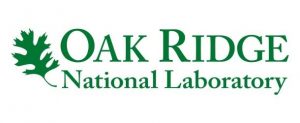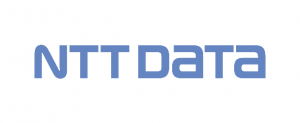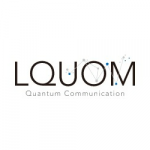Quantum News Briefs July 31: OQC and Cogniframe partner to enable users, regardless of their level of expertise, to test drive quantum; Researchers from ORNL use Quantinuum H1-1 quantum computer to identify molecular candidate for development of more efficient solar cells; Why India risks a quantum tech brain drain; Researchers from ORNL use Quantinuum H1-1 quantum computer to identify molecular candidate for development of more efficient solar cells + MORE

Quantum News Briefs July 31:
OQC and Cogniframe partner to enable users, regardless of their level of expertise, to test drive quantum
 OQC and hybrid machine learning company CogniFrame are partnering to fuel FirstQ, the world’s first plug-and-play quantum application store accessed via desktop apps.
OQC and hybrid machine learning company CogniFrame are partnering to fuel FirstQ, the world’s first plug-and-play quantum application store accessed via desktop apps.
This partnership will enable the creation and hosting of pre-curated hybrid and quantum-only use cases optimised for OQC hardware. The platform also facilitates seamless data uploads in prescribed formats via a desktop app. FirstQ offers a desktop application that works on Windows, Mac and Linux systems. The store supports plug and play commercial scale solutions for select predefined use cases, as well as access to near quantum and quantum hardware. The innovation of FirstQ lies in its accessibility to users of all expertise levels, making quantum technologies more approachable for a broader audience.
The integration of OQC’s computer into FirstQ has been successfully implemented, and CogniFrame has tested image restoration, segmentation and classification for the healthcare sector using a hybrid quantum solution designed to improve accuracy and obtain speed up. Further plans are being explored to use the OQC device via FirstQ for ongoing tests and commercial opportunities. “Our goal is to work closely and collaboratively with OQC to offer customers performance-optimised solutions for OQC hardware and provide meaningful results for users in the current NISQ era. We are actively working on projects using the OQC hardware, and solution developers will derive advantage from offering their solutions via FirstQ.” said Vish Ramakrishnan, CEO CogniFrame.
CogniFrame, based in Toronto, Canada, solves NP Hard and other complex optimisation, machine learning and simulation problems. It works with leading HPC and Quantum hardware providers to build and run proprietary algorithms and solutions that deliver immediate measurable value and help de-risk adoption of Near Quantum & Hybrid Quantum solutions by institutions globally. CogniFrame is a quantum pioneer and founding member of Quantum Industry Canada. It has launched the FirstQ Store , the first of its kind aggregator plug and play commercialisation store for near quantum and quantum ready applications. info@cogniframe.com Click here to read complete July 28 announcement on OQC website.
Why India risks a quantum tech brain drain
 India’s National Quantum Mission (NQM), approved by the national cabinet in April, is a government initiative that has the potential to catapult India to a global leader leading in quantum research and technologies, if leveraged correctly. Urbasi Sinha, Professor at the Raman Research Institute (RRI), Bangalore, India authored a July 30 article in TEMPO.CO explaining a great risk to the long-term success. Quantum News Briefs summarizes.
India’s National Quantum Mission (NQM), approved by the national cabinet in April, is a government initiative that has the potential to catapult India to a global leader leading in quantum research and technologies, if leveraged correctly. Urbasi Sinha, Professor at the Raman Research Institute (RRI), Bangalore, India authored a July 30 article in TEMPO.CO explaining a great risk to the long-term success. Quantum News Briefs summarizes.
Sinha explains the main areas of focus of India’s NQM research are quantum computing, secure quantum communications, quantum sensing and metrology and quantum materials.
The challenge for India, she cautions, is how India ensures it gets the best out of the mission.
India’s Department of Science and Technology had set up a pilot programme on Quantum Enabled Science and Technologies — a precursor to the National Quantum Mission.
As a result, India has a large number of young and energetic researchers, working at places such as RRI Bangalore, TIFR and IIT Delhi who have put an infrastructure in place for the next generation quantum experiments with capabilities in different quantum technology platforms. These include quantum security through free space, fibres as well-integrated photonics, quantum sensing and metrology.
Clear career progression would help India’s quantum workforce. The risk of brain drain, where local talent moves overseas for better opportunities, could be a real possibility if different industries which can benefit from the technology fail to recognise its transformative capabilities and how it can help create jobs and opportunities. The career path of students and post-doctoral researchers remains unclear as there are not enough positions in the academic sector. Another problem is industry and academia are competing with each other for quantum research funding which is why equal emphasis on quantum technology development in the industrial sector could help.
While India does have some quantum start-ups, more lab-to-market innovations which would make the technology practically useful could give the field momentum. Currently, the big industrial firms in India are not yet committed to quantum technology.
Another major deterrent is the lack of coordination. Multiple efforts to develop and research the technology, across government and start-ups, does not seem to have coherence and still lacks maturity.
Sinha concludes, “Continuing to build a skilled workforce and a clear career progression plan for those involved in research and development of quantum technologies can help secure India’s future in this space.” Click here to read her article in-entirety.
Researchers from ORNL use Quantinuum H1-1 quantum computer to identify molecular candidate for development of more efficient solar cells
 Researchers from the Department of Energy’s Oak Ridge National Laboratory using the full capabilities of the Quantinuum H1-1 quantum computer, not only demonstrated best practices for scientific computing on current quantum systems but also produced an intriguing scientific result. Quantum News Briefs summarizes.
Researchers from the Department of Energy’s Oak Ridge National Laboratory using the full capabilities of the Quantinuum H1-1 quantum computer, not only demonstrated best practices for scientific computing on current quantum systems but also produced an intriguing scientific result. Quantum News Briefs summarizes.
By modeling singlet fission — in which absorption of a single photon of light by a molecule produces two excited states — the team confirmed that the linear H4 molecule’s energetic levels match the fission process’s requirements. The linear H4 molecule is, simply, a molecule made of four hydrogen atoms arranged in a linear fashion. A molecule’s energetic levels are the energies of each quantum state involved in a phenomenon, such as singlet fission, and how they relate and compare with one another. The fact that the linear molecule’s energetic levels are conducive to singlet fission could prove to be useful knowledge in the overall effort to develop more efficient solar panels.
Singlet fission is a multistate phenomenon, so the ORNL team needed a computational method that could describe all the process’s quantum states on an equal footing to calculate accurate energetics numbers. They turned to PDS, which is a quantum solver based on the Peeters-Devreese-Soldatov approach and developed at Pacific Northwest National Laboratory.
ORNL team members applied three independent strategies to decrease the problem’s computational workload, which reduced their time to solution from months to a few weeks. First, in a technique called qubit tapering, they decreased the number of qubits required to express the problem, reducing the size of the problem itself. Second, they took fewer measurements to solve the problem by measuring groups of terms once rather than measuring each individual term from every group. Third, instead of implementing each circuit individually, they found a way to run four circuits in parallel, allowing them to use all 20 qubits in the H1-1. Click here to read announcement in-entirety on ORNL site.
NTT DATA demonstrates quantum computing’s potential in genome assembly and disease treatment
 NTT DATA announced on July 20 the end of a project that used quantum computing to optimise genome assembly processes. This is a milestone in the use of this technology in the Healthcare and Life Sciences industries. Quantum News Briefs summarizes the announcement.
NTT DATA announced on July 20 the end of a project that used quantum computing to optimise genome assembly processes. This is a milestone in the use of this technology in the Healthcare and Life Sciences industries. Quantum News Briefs summarizes the announcement.
The project explored the capability and feasibility of using quantum computing for genome assembly by comparing quantum and non-quantum computing approaches. To do so, NTT DATA tackled a genome assembly problem in an environment that simulated real-world conditions. The conclusion of these tests was that scientists can identify genetic variations associated with certain illnesses and conditions through someone’s genomic sequencing and genome assembly.
This information can then be used to develop new treatments and therapies to target the underlying genetic causes of the disease.
The objective of the collaboration between NTT DATA Spain, NTT DATA Brazil and NTT’s Center for Quantum Innovation has been to implement and compare classical (or non-quantum) – and quantum computing algorithms based on two approaches.
Classical approach: NTT DATA used the Gurobi product – one of the most powerful packages for combinatorial optimization problems – and the Simulated Annealing algorithm.
Quantum approach: NTT DATA used Quantum Annealing technology with superconducting qubits from D-Wave. NTT Research’s CIM (Coherent Ising Machine) then simulated the technology. The comparison was based on the measurement of computational efficiency, accuracy, and scalability indicators.
Although the results derived from the proof-of-concept show that purely quantum approaches still present difficulties in tackling large problems, as the computational capacity increases, a substantial improvement in processing time can be observed, depending on the problem size, from exponential in traditional systems to almost linear in quantum systems.
David Montal, head of Pharma & Life Sciences, and Jose Aznar, project lead and head of Health Innovation at NTT DATA EMEAL, explained: “This concept test is the first of its kind in using quantum technologies in the Healthcare industry. Although the use of quantum technologies is still in its early days, their applicability in the medium and long term will be decisive in fields such as genomics, digital image processing and real-time health data analytics where efficiency and processing capacity is key.” Click here to read the complete announcement.
Sandra K. Helsel, Ph.D. has been researching and reporting on frontier technologies since 1990. She has her Ph.D. from the University of Arizona.





















